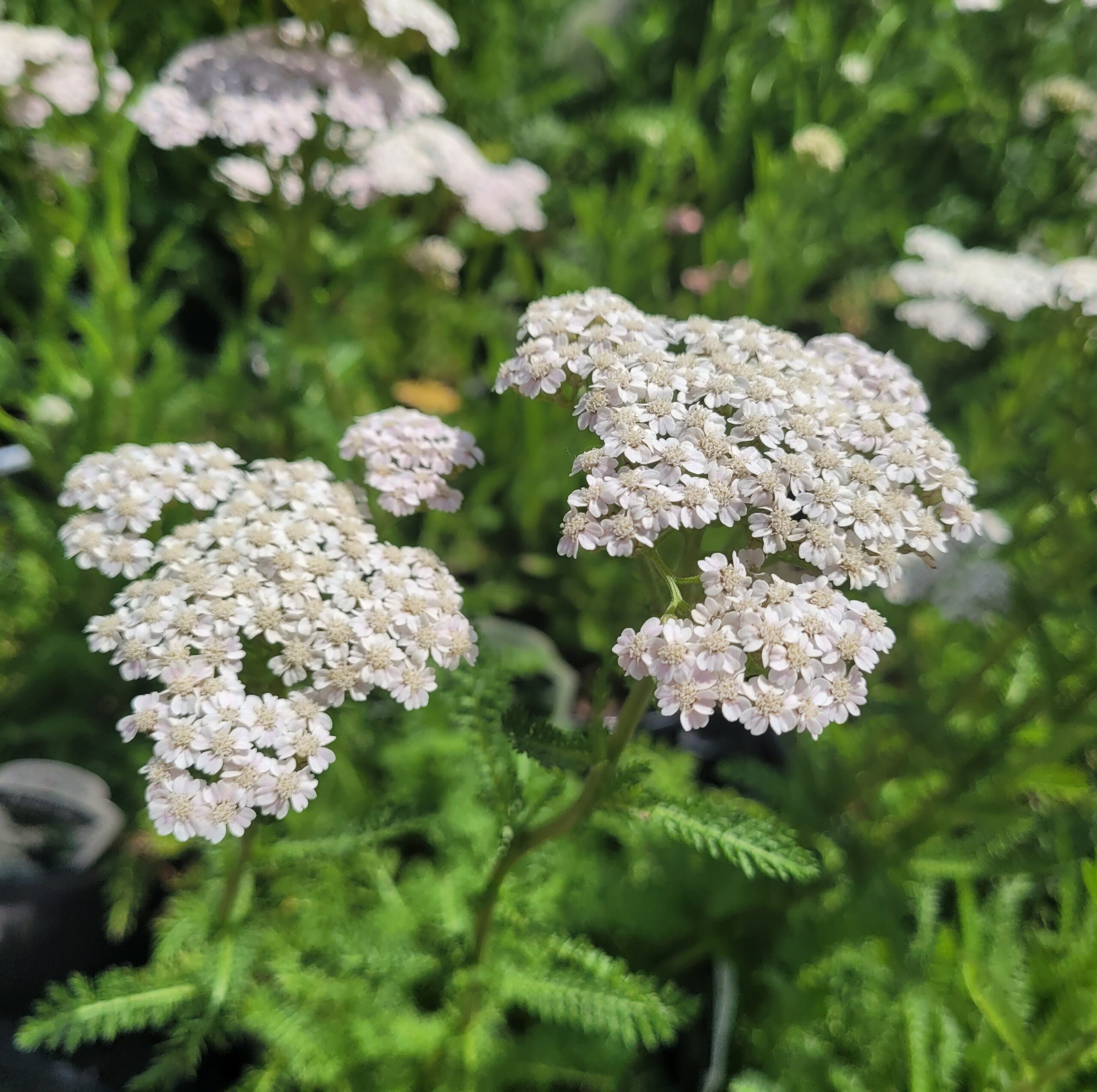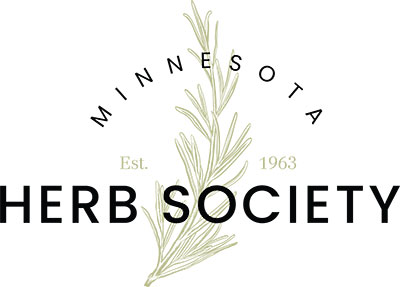IHA Herb of the Year 2024 — Yarrow


Photo credits: Missouri Botanical Garden
Yarrow (Achillea millefolium) is an herbaceous perennial in the Asteraceae family. It is native to Western Asia, Europe, and North America, typically found growing in USDA Zones 3-9. Yarrow is a self-seeding, rhizomatous, spreading plant with medium-green fern-like dissected foliage that stands in a mound, 2-3’ tall and has a strong, somewhat spicy aroma. Common Yarrow has small, showy white flowers that bloom in summer and present in dense, flattened, compound corymbs between 2-4’ wide. Cultivars and hybrids are thought to have stronger stems, more upright habits, and larger flowers, in a range of colors including pinks, reds, creams, yellows and bicolor pastels. The plant prefers full sun and lean, dry to medium, well-drained sandy soils but will do well in average garden soil and may even tolerate poor soil as long as drainage is good. Common Yarrow attracts butterflies and tolerates deer, drought, dry soil, and air pollution. Potential disease problems include stem rot, powdery mildew, and rust. It is suggested to cut stems back after bloom to avoid tangling of stems and foliage. Divide every 2-3 years to maintain vitality.
Common Yarrow is known by many names, including milfoil, thousandleaf, soldier’s woundwort, bloodwort, nose bleed, devil’s nettle, sanguinary, old-man’s-pepper, and stenchgrass. The genus name Achillea refers to Achilles, hero of the Trojan Wars in Greek mythology, who is said to have used the plant medicinally to stop bleeding and to heal the wounds of his soldiers. The specific epithet millefolium means "thousand-leaved" in reference to the finely divided foliage.
Culinary and Medicinal Uses*
Yarrow’s peppery flowers and bitter leaves can be added to salads, and the leaves can be added to soups and sauces or simply boiled and simmered in butter as a side dish. Because of its bitter properties, it has been used in both Western herbalism and Traditional Chinese Medicine as a bitter tonic (in the form of a tincture or a tea) to help stimulate sluggish digestion. The plant was used for treating war injuries in ancient times and still is today, as the leaves are known to stop the bleeding of wounds (and nosebleeds!). Because it is thought to have a particular impact on the blood, circulation, and the toning of blood vessels, Yarrow has been used topically to dispel stagnant blood in hardened bruises and may offer some help for varicose veins. Yarrow is also said to have been used historically for urinary tract issues, respiratory disorders, and menstrual problems (including heavy menstruation, postpartum hemorrhage, and miscarriage). It is a treasured remedy during cold and flu season as it stimulates the immune system, and the flowers can be used to cool high fevers and help fight infection (use as a warm tea to induce a sweat and break a fever). The flowers are also used in a steam inhalation for treating upper respiratory congestion, hay fever, and mild asthma.
Precautions/Contraindications: Proper plant identification is crucial, as there are poisonous look-alikes (such as Queen Anne’s Lace and Poison hemlock); use as an acute remedy only, not to be taken regularly; avoid in cases of allergy to the Asteraceae family; not for use during pregnancy (unless under supervision by a qualified professional); may lead to photosensitivity and sensitive individuals may develop a rash; high doses may cause headaches, nausea, and vomiting.
*These statements have not been evaluated by the Food and Drug Administration. Consult with a qualified healthcare practitioner before using herbal products, particularly if you are pregnant, nursing, or on any medications. For educational purposes only.
References
Achillea millefolium - Plant Finder. (n.d.). Missouri Botanical Garden. Retrieved December 4, 2023, from https://www.missouribotanicalgarden.org/PlantFinder/PlantFinderDetails.aspx?taxonid=277129&isprofile=0&letter=A
Blankespoor, J. (2022). The Healing Garden: Cultivating and Handcrafting Herbal Remedies. Houghton Mifflin Harcourt.
Easley, T., & Horne, S. (2016). The Modern Herbal Dispensatory: A Medicine-Making Guide (Illustrated ed.). North Atlantic Books.
Harrar, S., & O’Donnell, S. A. (1999). The Woman’s Book of Healing Herbs: Healing Teas, Tonics, Supplements, and Formulas. Rodale Books.
Ody, P. (2017). The Complete Medicinal Herbal: A Practical Guide to the Healing Properties of Herbs (Reprint ed.). Skyhorse.
Rose, L. M. (2017). Midwest Medicinal Plants: Identify, Harvest, and Use 109 Wild Herbs for Health and Wellness. Timber Press.
Sarahearm. (2015, September 14). Achillea millefolium. The Naturopathic Herbalist. https://thenaturopathicherbalist.com/2015/09/14/achillea-millefolium/
